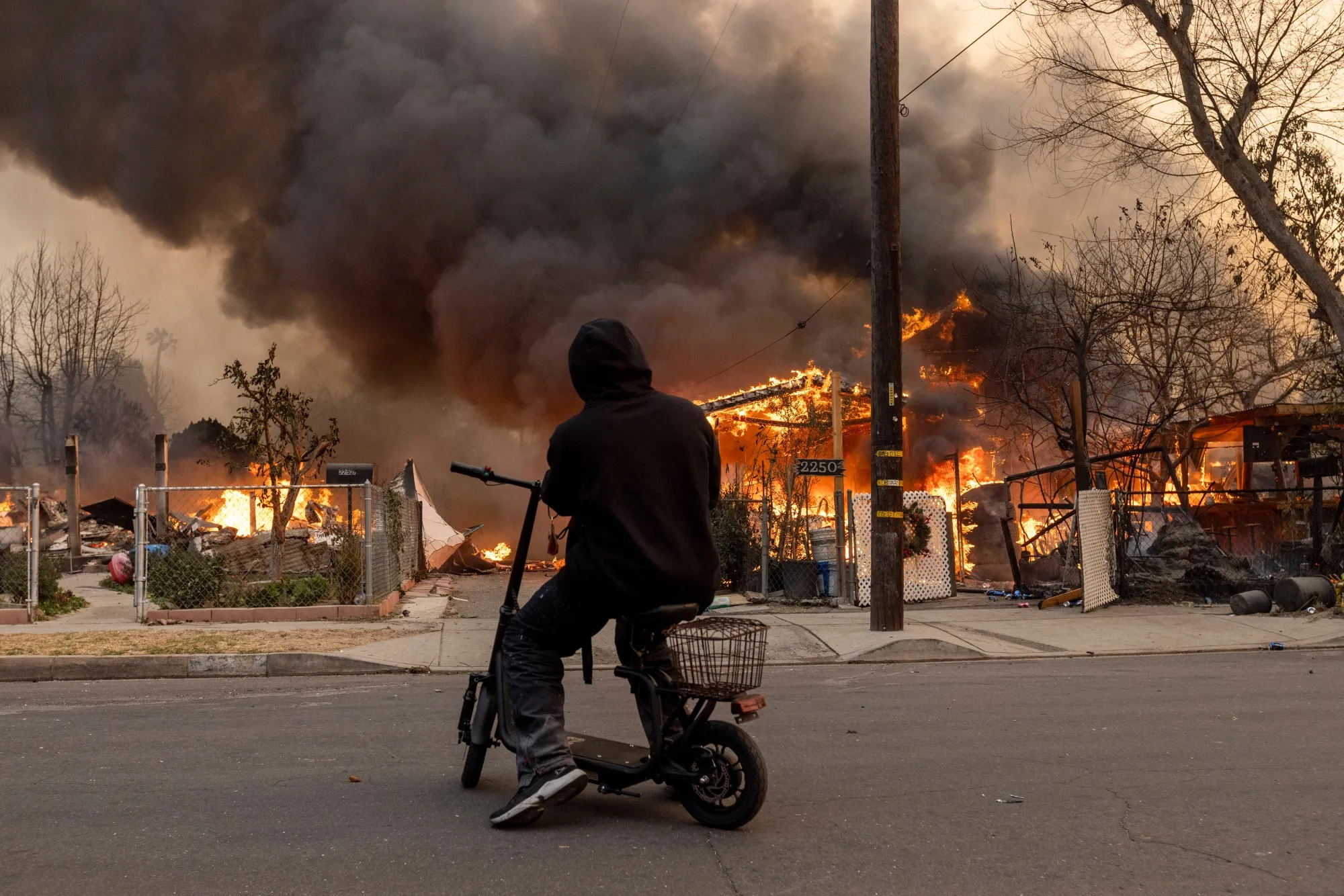World
Greater Los Angeles Wildfires Leave Millions Without Power

Greater Los Angeles wildfires have lest over 1.5 million customers were without power in California just after 3 p.m. Pacific Time on Wednesday. This figure includes over 936,000 outages in Los Angeles County alone.
The remaining outages were almost entirely in Southern California. Ventura County reported at least 194,000 outages, followed by San Bernardino County with over 168,000, Orange County with over 162,000, and Riverside County with just over 54,000.
Southern California Edison reported the most outages, with more than 1.36 million of its at least 5 million customers losing power as a result of the Greater Los Angeles wildfires.
According to Newsweek, over 3.1 million customers were “impacted” by the outages, with another 1.1 million “possibly impacted” by upcoming planned outages.
Some outages were scheduled “public safety power shutoffs,” which were specifically initiated to reduce wildfire risks. However, heavy winds and fires knocked down power lines, causing many other outages. The number of outages caused by the fires was unclear.
What People are Saying about the Greater Los Angeles Wildfires
At 1 p.m. PST, the Los Angeles Department of Water and Power issued an incident update: “Currently, customers experiencing a power outage should expect it to take up to 48 hours before our crews can respond.
High winds and fire conditions continue to pose hazards for our crews, affecting response times and restoration efforts.”
Los Angeles Mayor Karen Bass, on X, formerly Twitter: “Dangerous wind conditions have caused power outages in neighborhoods across the City. @LADWP crews have prepared for this windstorm and are in the field working to restore power quickly and safely.”
The Los Angeles Police Department, on X: “Reports of traffic lights being out at several intersections throughout the City of LA due to power outages. As a reminder, if you approach an intersection with traffic lights that are out, slow down and treat it as a 4-Way Stop. Please be safe and stay off the roads if possible.”
Burbank Water and Power, on X: “We want to thank all Burbankers for your patience and understanding as we tackle outages across the city. High winds are causing flying debris to impact power lines, and while we’re working hard to restore service, some areas may experience repeat outages as winds continue. Our dedicated line crews are on the job, working diligently to restore power as quickly and safely as possible. Stay safe, Burbank—we’re in this together.”
High winds are causing flying debris to collide with power lines, and while we are working hard to restore service, some areas may experience repeat outages as the winds from the greater Los Angeles wildfires continue.
Our dedicated line crews are on the scene, working hard to restore power as soon and safely as possible. Stay safe, Burbank—we’re in this together.
What Happens Next?
The strong Santa Ana winds that caused the fires to spread quickly were expected to subside on Wednesday evening, potentially improving fire containment efforts.
Power companies are currently working to restore many outages in Southern California, but estimated restoration times vary and are unavailable in some areas.
The Greater Los Angeles wildfires happen for several reasons, mainly a mix of natural and human factors. Hot, dry weather, combined with strong Santa Ana winds, creates prime conditions for fires to start and spread quickly. Drier vegetation acts as fuel, a problem worsened by recurring droughts.
Human activities, like poorly maintained power lines or discarded cigarettes, often ignite the fires. Urban sprawl into wildland areas increases the chances of fire accidents while putting more people and property at risk.
Additionally, fire suppression over the decades has allowed unnatural fuel build-ups, making fires more destructive when they do occur. These elements together explain why wildfires in the region are frequent and often catastrophic.

































